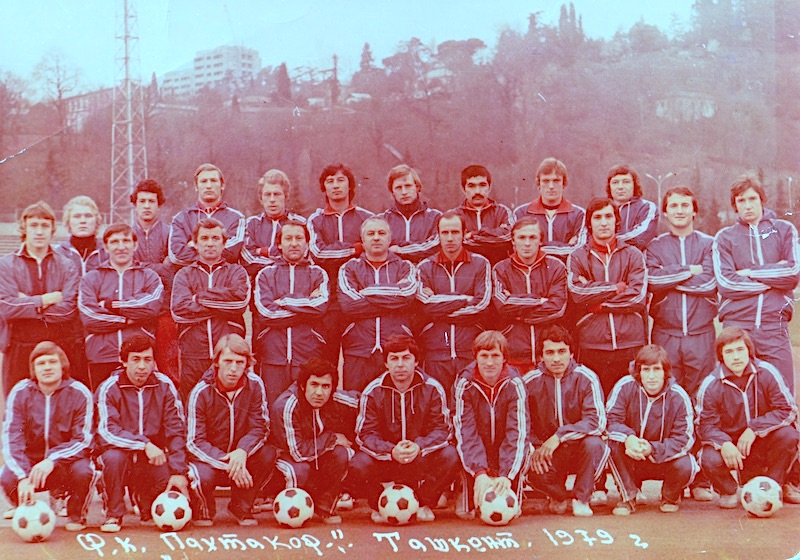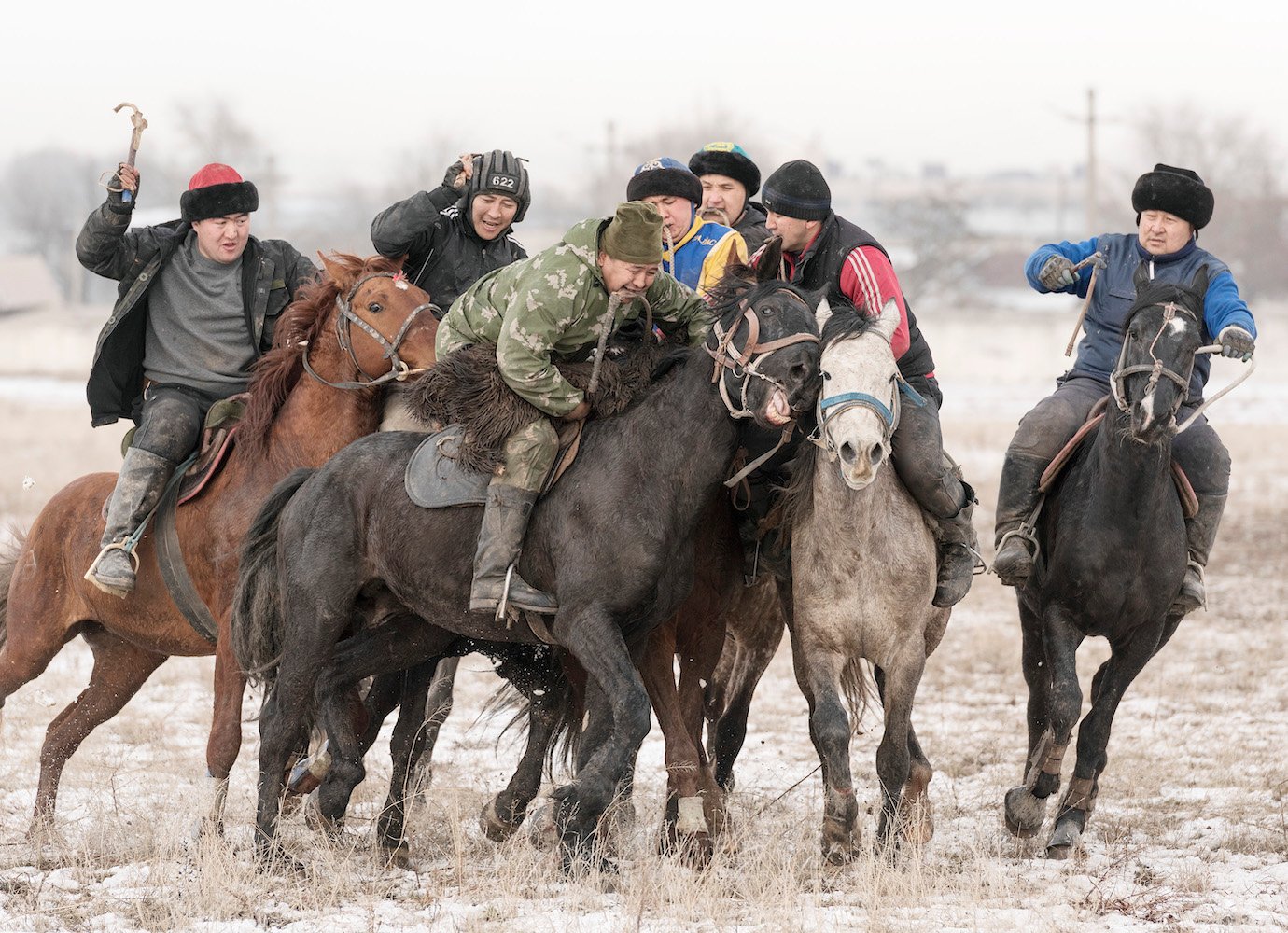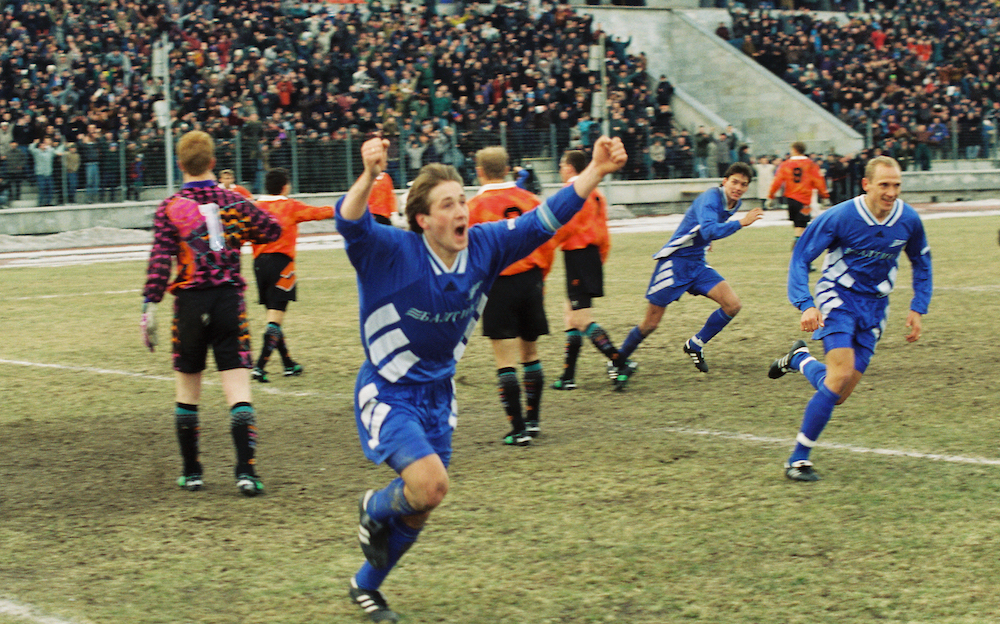Misha: the tragic story of the Uzbek-Korean soccer star who became a Soviet icon

For a generation of Soviets, footballer Mikhail An was Uzbekistan’s answer to Pelé. Director Brian Song untangles his multi-layered legacy, from his tragic death and subsequent government cover-up, to his place in the lives of thousands of Uzbek-Koreans.
In 1979, Tashkent’s Pakhtakor Football Club had rejoined the Soviet Union’s top football league and looked ready to take on the Soviet Republics’ most prestigious football clubs. Earlier that year they’d played against Dinamo Minsk, and that summer the two clubs intended face each other again. On 11 August, 1979, 14 players and three staff members set off for Minsk on a flight via Guryev (modern day Atyrau, Kazakhstan) and Donetsk. They never reached their destination. Somewhere near the Ukrainian city of Dniprodzerzhynsk, now Kamianske, less than an hour after leaving Donetsk, their airplane collided with another passenger jet, killing all 178 people on board both aircrafts.
Among the Pakhtakor players who died was the 27-year-old midfielder Mikhail An, the subject of Brian Song’s documentary Misha, opening the Manchester Film Festival this month. A member of Uzbekistan’s ethnic Korean community, An had joined the club in 1971 and soon became one of its star players. Alongside teammates Valdimir Fyodorov and Vasilis Hatzipanagis, he formed a formidable trio “any team from the Soviet Union was ready to take”, as An’s brother Dmitry puts it in the film. An was a force to be reckoned with, a playmaker compared to “a conductor”, someone who could “really see the field” and “makes passes along 30 to 40 meters”. He once even took his team to victory against the Ukrainian FC Kryvbas by scoring from a corner kick twice in one match.
Mikhail An (centre) with his teammates.
Misha tells this story through interviews and archive material, but also by reenacting moments from An’s life with actors. This was a way to solve a material problem: there is very little footage of Mikhail An. “Archiving footage and licensing footage to gain profit wasn’t really in the equation in [Soviet] society. If they were running out of tape they’d say ‘let’s just use the tape from a few weeks ago,’” director Brian Song explains.
He also suspects that government suppression of the 1979 crash played a role: “One of the stories was that once the crash happened, [and] the footage kind of disappeared overnight.” Song wanted to show An’s story rather than “have talking heads saying how he was great” and, with some help from a videographer friend, set out to make his own footage, creating dialogue-less scenes that evoke a feeling, an atmosphere, rather than try to recreate real events. They culminate in a lengthy setpiece where the funeral of the Pakhtakor members becomes something highly choreographed, almost a dance, contrasting with the more traditional documentary aesthetic of the interviews and archive footage.
The funeral scene is the emotional heart of the film, which, once it gets to the story of the plane crash, expands to tell the story of the loved ones left behind by all the Pakhtakor FC players, not just An. The youngest, Sirozhiddin Bazarov, was just 18. “Even though the tragedy happened over forty years ago it still affects that generation. You can see a lot of sadness,” Brian Song says. “One of the coaches’ wives, who actually passed away a few months ago, [said] it was her mission to find justice for these guys.” That struggle came after the Soviet authorities initially tried to bury the story of the crash, only reporting the deaths a week later and without mentioning their cause. Eventually there was a trial, resulting in criminal convictions for two air traffic controllers. Alla Tazetnikova, the coach’s wife, never accepted the official narrative.
Uzbeks mourn the death of Mikhail An.
But Mikhail An’s story is also that of Central Asia’s Korean diaspora, the Koryo-Saram. More than 170,000 of ethnic Koreans were deported to the Kazakh SSR and the Uzbek SSR from the Russian Far East in 1937, including Mikhail An’s parents. The Stalinist authorities at the time saw them as potential fifth columnists due of their perceived ties to Japan, which at that time was occupying Korea. It was the latest in a long line of anti-Korean policies: previously, they had been judged as “politically unreliable” and largely denied Soviet citizenship. Many deportees died on the way to Central Asia and in the first years of their forced resettlement. Misha does not ignore that history, instead bringing it to the screen through interviews with survivors — a precious and rare testimony of the violence they suffered.
It wasn’t learning about An that led Song to the history of the Koryo-Saram but rather the other way around. After watching a Korean documentary about the deportations, he reached out to the casting director on social media. “I asked ‘Can I meet you for real?’ and he said, “Yes, next week.” So, I flew to Korea and met with this guy,” says Song. “He connected me with somebody in Uzbekistan. The idea was that we would film interviews with people from that community.” During this first trip, he met Dmitry An, who told him about his brother, Pakhtakor FC, and the 1979 crash. Song was drawn to the story of this “unlikely hero who was able to be successful and gain a lot of respect for the local Korean community, but then was tragically taken away too quickly.” He decided to make An the focus of the documentary.
The result is a hagiographic portrait of a player who seems more myth than man, but for occasional glimpses into his personal life: his fear of flying, his wedding at the Hotel Uzbekistan in Tashkent, his friendship with his teammates Fyodorv and Hatzipanagis. Above all it’s the story of a tragic figure whose memory is still alive in his city and, to Uzbekistan’s Koryo-Saram, the light of a generation.


